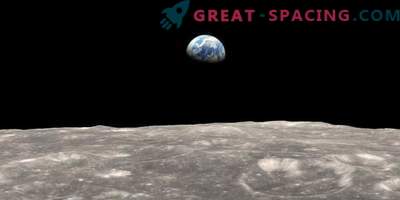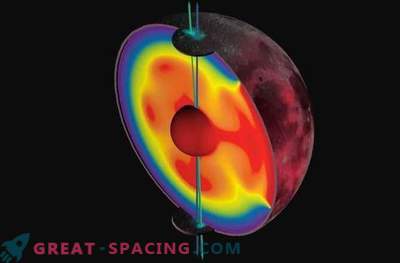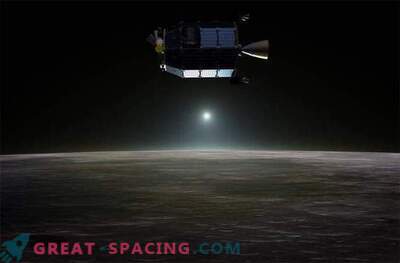
Volcanic fiery eruptions on the surface of the moon, similar to those occurring today in Iceland, according to a new study, were fed by carbon monoxide.
Using new methods of analysis, scientists re-analyzed the content of green and orange elements of volcanic glass found in the residual magma contained in soil samples that were delivered from Moon during the Apollo-15 and Apollo-17 expeditions .
"Such volcanic glasses in the lunar soil can remain after a fountain of lava, an eruption under high pressure, in which a stream of lava spills out, splashing drops that cool quickly," Bruno Skylet shared in Nature Geoscience.
Similarly, it happens when twisting the cap on a bottle of soda that has just been actively shaken.
On Earth, the gas that provokes such eruptions is carbon monoxide.
New studies of the samples showed that the concentration of carbon and water in them decreased relative to the center of the particles, and computer simulated studies confirmed the theory that carbon monoxide was most likely the cause of lava fountains on the lunar surface. “When the carbon monoxide version was discussed, there was no evidence,” said Alberto Saal, a moon scientist, “According to another version, this gas is hydrogen, but a geological study did not confirm that the samples contain a large amount of hydrogen.”
The researchers also note that the carbon concentration in the lunar magma is very similar to that found in the basalt layer of the mid-oceanic ridges of the Earth's lithosphere.
According to earlier studies by Saal and his colleagues, it is known that Earth and Moon have the same values of water concentration, similar values of other substances, in particular the ratio of hydrogen isotopes.
These studies are of great importance when opening the secrets of the creation of the moon. Today, the theory that the Earth, at the beginning of its history, collided with an object that was ten times larger than the mass, was adopted as a reference, and the Moon was formed from the debris of cosmic bodies. That is, in fact, the structure of the Moon is the same as the structure of the Earth - lunar minerals, similar in composition to those of the Earth, testify to this. So, the body that collided with the earth in the vastness of space, had a similar structure or was completely identical to the Earth.











































